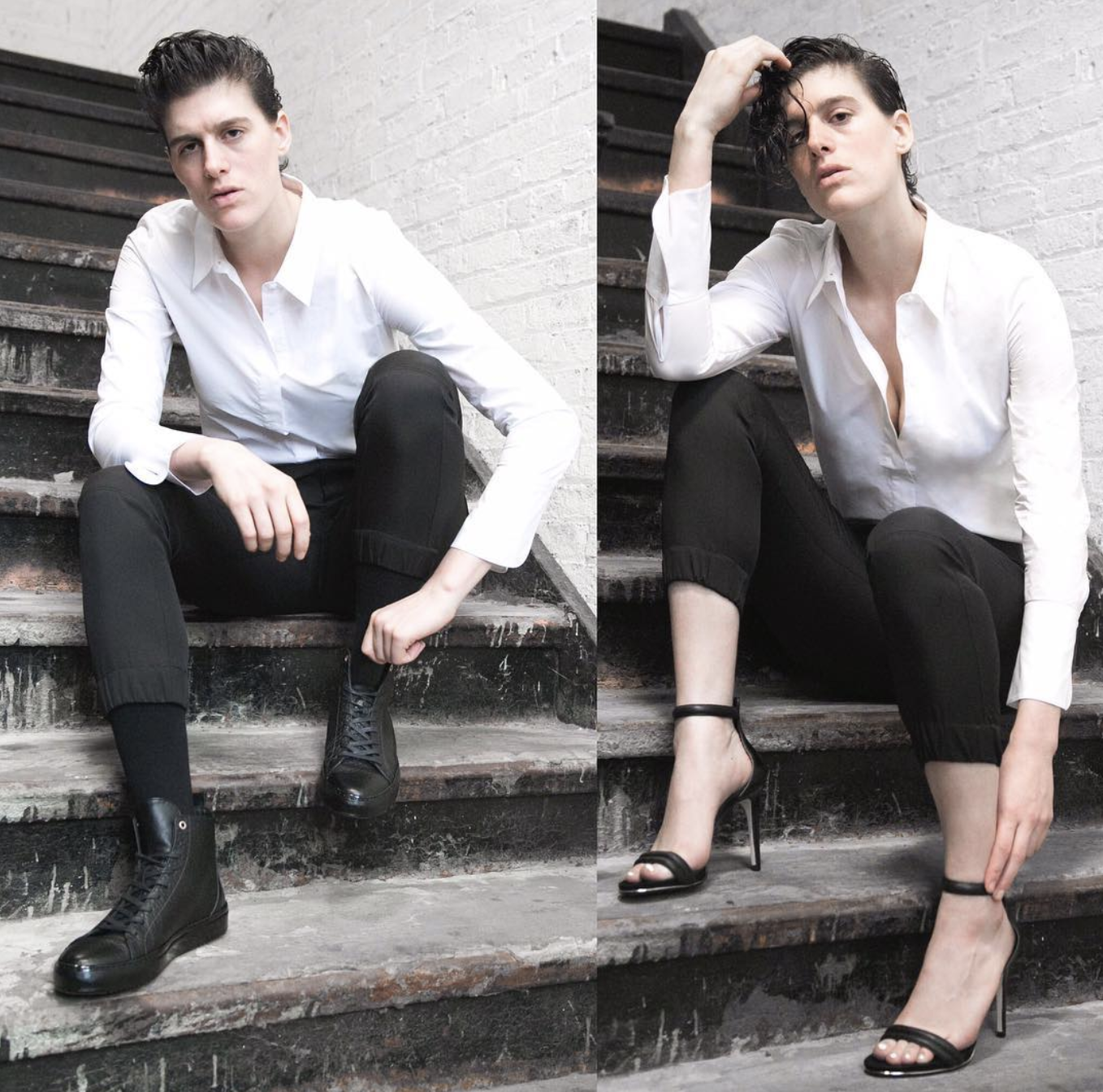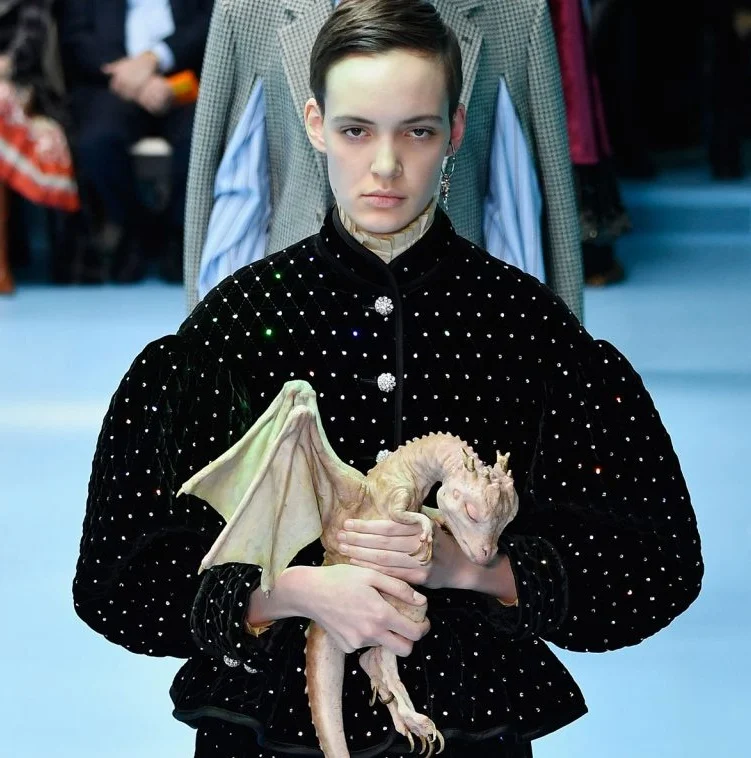Binaries on the Runway
By Kathy Villa
The fashion and modeling industries have long been places of exclusivity, elitism and the seemingly unfaltering aesthetic of the thin white person. Until recently, the industry has had little to no diversity, particularly lacking in queer or LGBT representation. Today, it appears the industry has begun to embrace a multitude of gender identities as we see a revival of androgynous and genderqueer models — but how extensive is this inclusivity, and how are the models in question affected by it?
Photo courtesy of @raindovemodel on Instagram
In fashion, the term “androgyny” is used to describe an aesthetic that “combines both masculine and feminine characteristics” according to Teen Vogue. It is often used loosely, some people using it to describe their gender, with others using it as a descriptor of style. This is where models such as Rain Dove (@raindovemodel) come into play. Standing at 6’2” with a fierce, masculine expression, their androgynous physicality swiftly brought them popularity in 2014. Born female, Rain Dove prefers gender neutral pronouns, but is accepting of every pronoun. Because agencies only seemed to be interested in them for men’s wear campaigns, they ended up pursuing different interests.
That being said, more people are coming to understand the fluidity of gender and clothing, yet high end designers have a long way to go when it comes to inclusivity.
Thanks to those in Hollywood who identify outside of the gender binary the fashion industry is desperate to maintain, the entire industry has shifted towards bigger and better things. Caitlyn Jenner’s public transition was widely celebrated across the internet, and contributed to the LGBT community’s up and coming era of social acceptance and celebration. Genderqueer and non-binary stars like Ruby Rose and Amandla Stenberg have contributed to queer visibility in the entertainment industry. Jaden Smith put everyone in awe when his Louis Vuitton Womenswear campaign in 2016 depicted him in a skirt, and Young Thug broke boundaries when he chose to wear a billowing purple gown for the cover art of his 2016 album No, My name is Jeffery.
But what about the runways of major fashion houses? Despite the increasing number of gender-nonconforming and transgender models being hired by higher end designers, non-binary individuals continue to be used in binary forms. Enter Oslo Grace, the 21-year-old trans non-binary model ruffling everyone’s feathers in the fashion industry. Based in New York, Grace had appeared on plenty of catwalks in the fashion industry, but made their first popular appearance at Jeremy Scott’s Moschino show in January of 2018, closing it alongside Rupaul’s Drag Race winner Violet Chachki in Milan. Impossible to miss, they garnered the attention of Alessandro Michele, who then tasked them with carrying the signature baby dragon for Gucci’s Spring/Summer 2018 fashion week.
Photo Courtesy of Vogue
Photo Courtesy of W Magazine
Under their agency, Grace appears under both menswear and womenswear boards, and continues to make appearances for other big name fashion companies. More recently, they were deemed the highlight of Kenzo’s Fall/Winter 2019–2020 show striking multiple looks in one show. In only four minutes, the model transitioned from a compelling pink suit with side-swept bangs to a lavender eye look paired with a fringe-laden pink dress to end the show. When asked about their journey through modeling and why they choose to appear in both mens and womens wear, Grace told Refinery29 “I usually present very binary on the runway because runways aren’t usually nonbinary.” While they continue to work within the traditional limitations of runway culture, they are pushing the boundaries of what it means to be a model by being themselves. Grace is clearly on their way to becoming one of the fashion industry’s hidden gems, in more ways than one. More importantly, they are testing the limits and proving it’s time the fashion industry stopped thinking of fashion as a matter of strictly male or female altogether.



